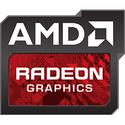Wednesday, June 22nd 2022

AMD Releases FidelityFX Super Resolution 2.0 Source Code Through GPUOpen
Today marks a year since gamers could try out AMD FidelityFX Super Resolution technology for themselves with our spatial upscaler - FSR 1. With the introduction of FSR 2, our temporal upscaling solution earlier this year, there are now over 110 games that support FSR. The rate of uptake has been very impressive - FSR is AMD's fastest adopted software gaming technology to date.
So it seems fitting that we should pick this anniversary day to share the source code for FSR 2, opening up the opportunity for every game developer to integrate FSR 2 if they wish, and add their title to the 24 games which have already announced support. As always, the source code is being made available via GPUOpen under the MIT license, and you can now find links to it on our dedicated FSR 2 page.Along with the FSR 2 API, and the full C++ and HLSL source code behind it, you'll also discover our Cauldron-based sample and comprehensive API documentation to help you with your integration. We put a lot of effort into the documentation to help developers with their integrations as much as possible, so you can add FSR 2 to your game or engine and really achieve the highest possible quality. Please check it out!
The version you'll be downloading today from GitHub is v2.0.1, which reflects the ongoing improvements we've been making since you would have first seen FSR 2 in action earlier this year.
FSR 2 supports both DirectX 12 and Vulkan, with plugins for Unreal Engine 4.26/4.27 and Unreal Engine 5 due very soon. It will also be available through the Xbox Game Development Kit.
We've also updated the FSR 2 page here on GPUOpen - you'll find new screenshot comparisons and updated content.
Note that FSR 1 can still be exposed as its own upscaling option in addition to FSR 2 in game titles. Both technologies have different characteristics which may be suitable for a wider range of platforms and user preferences. For example, our FSR 2 partner title DEATHLOOP exposes both.
We're really excited to finally get the source code, docs, and the sample out to developers, so head over to our updated FSR 2 page now to see what's new!
So it seems fitting that we should pick this anniversary day to share the source code for FSR 2, opening up the opportunity for every game developer to integrate FSR 2 if they wish, and add their title to the 24 games which have already announced support. As always, the source code is being made available via GPUOpen under the MIT license, and you can now find links to it on our dedicated FSR 2 page.Along with the FSR 2 API, and the full C++ and HLSL source code behind it, you'll also discover our Cauldron-based sample and comprehensive API documentation to help you with your integration. We put a lot of effort into the documentation to help developers with their integrations as much as possible, so you can add FSR 2 to your game or engine and really achieve the highest possible quality. Please check it out!
The version you'll be downloading today from GitHub is v2.0.1, which reflects the ongoing improvements we've been making since you would have first seen FSR 2 in action earlier this year.
FSR 2 supports both DirectX 12 and Vulkan, with plugins for Unreal Engine 4.26/4.27 and Unreal Engine 5 due very soon. It will also be available through the Xbox Game Development Kit.
We've also updated the FSR 2 page here on GPUOpen - you'll find new screenshot comparisons and updated content.
Note that FSR 1 can still be exposed as its own upscaling option in addition to FSR 2 in game titles. Both technologies have different characteristics which may be suitable for a wider range of platforms and user preferences. For example, our FSR 2 partner title DEATHLOOP exposes both.
We're really excited to finally get the source code, docs, and the sample out to developers, so head over to our updated FSR 2 page now to see what's new!

28 Comments on AMD Releases FidelityFX Super Resolution 2.0 Source Code Through GPUOpen
We never really loved you as there can be no love, when it is proprietary.
You also went as far as banning older N cards from utilizing it, which is a new low even by your low standards.Yeah! I mean, don't forget that G-Sync thing. Groundbreakingly ground breaking!!!
And PhysX!
Also, it is green, which is easy on eyes.
No matter where you spit, there is value! :D